For their second Slow Art Day, the Eskenazi Museum of Art in Bloomington, Indiana, offered visitors a wide range of activities, including in-gallery sketching, snacks, self guided tours, discussion, and an art-based puzzle contest. Note that the museum is part of the growing Bloomington city-wide Slow Art Day event – which this year included more than 20 museums and galleries across the city (remarkable!).
For the slow looking activity, three artworks were highlighted by Eskenazi, though guests were encouraged to pick any piece in the collection:
“Swing Landscape” by Stuart Davis
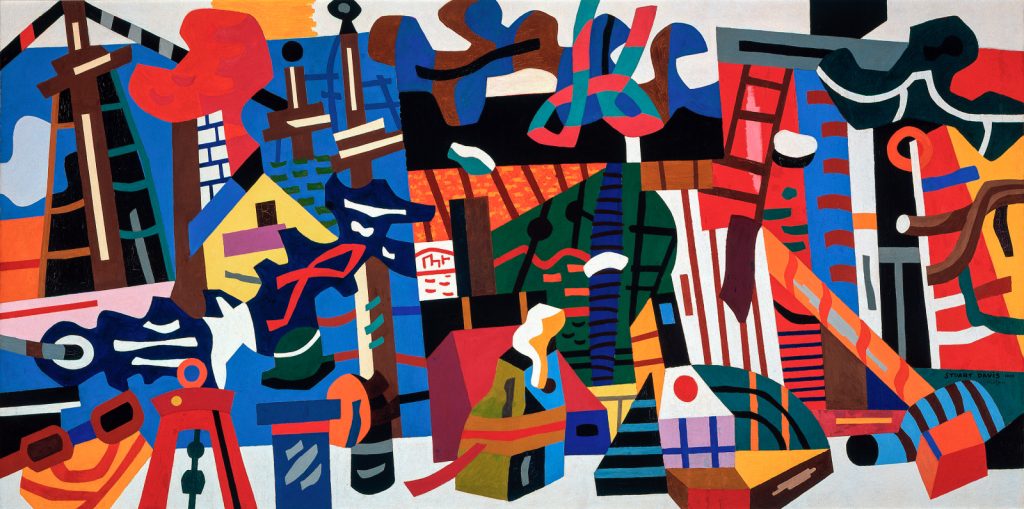
“Matter” video by Adam Magyar
Below is a still image from the video.
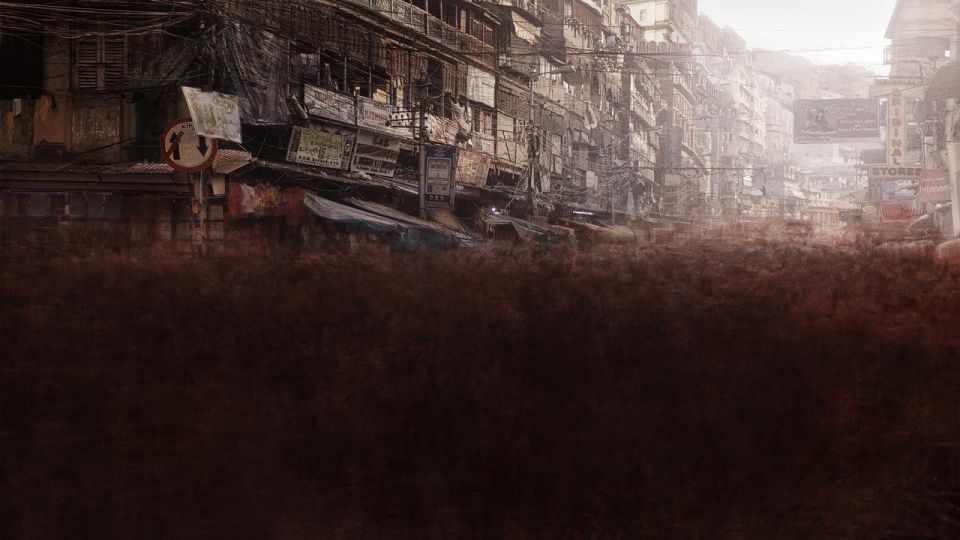
“Flight of a Thousand Birds” by Anila Agha
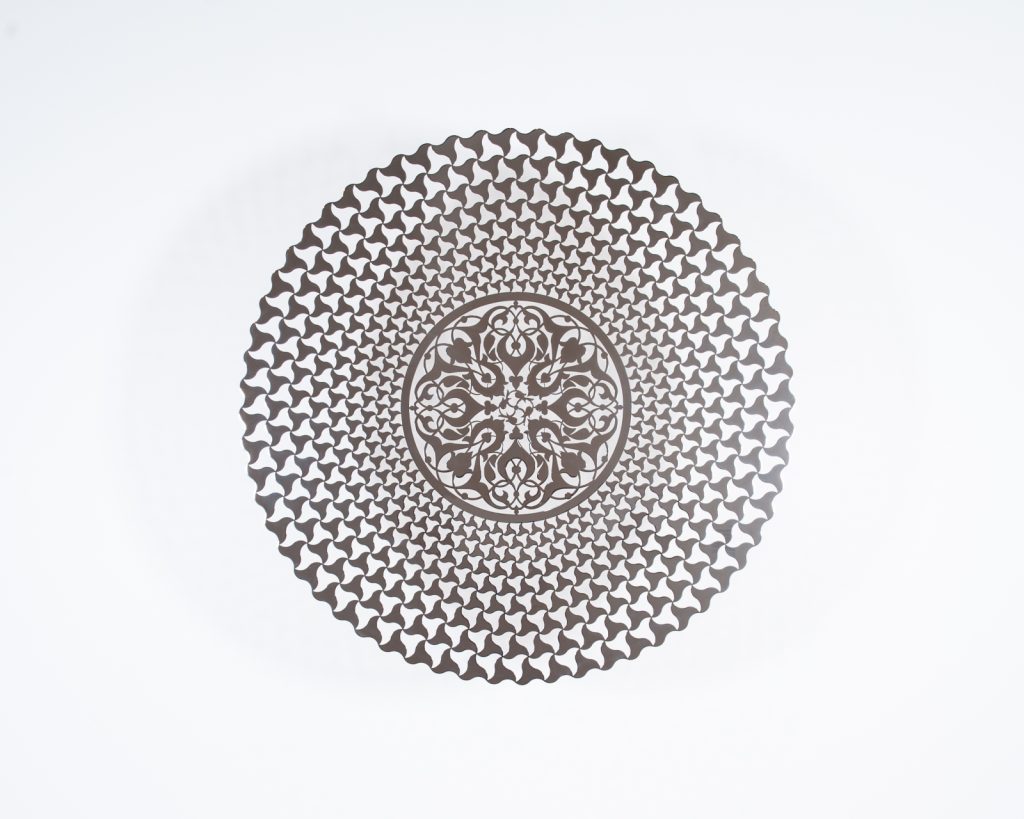
To facilitate individual slow looking and discussions, the museum re-used their slow looking hand-out from last year (with a few tweaks). We invite all museum curators and Slow Art Day hosts to view the particularly well-designed hand-out below.
Keaton Clulow, Public Experiences Manager, shared that the puzzle contest was particularly popular. For that, guests were asked to spend at least ten minutes with “Swing Landscape” by Stuart Davis before attempting to put together a giant 3D puzzle of the piece from memory.
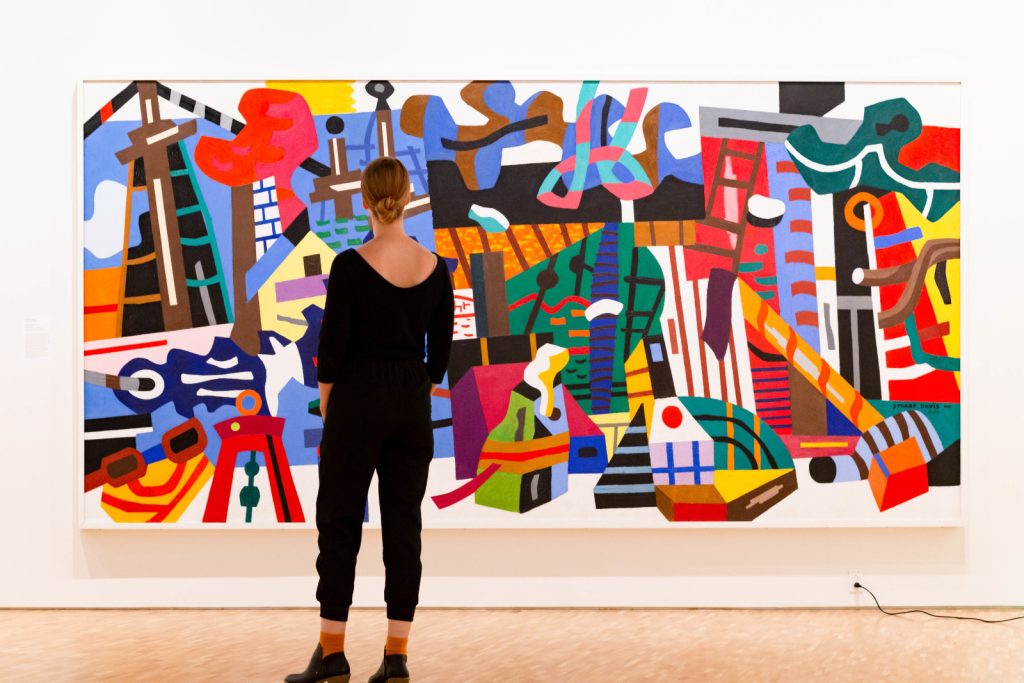
The museum was also successful at involving all generations, including young people (see below).
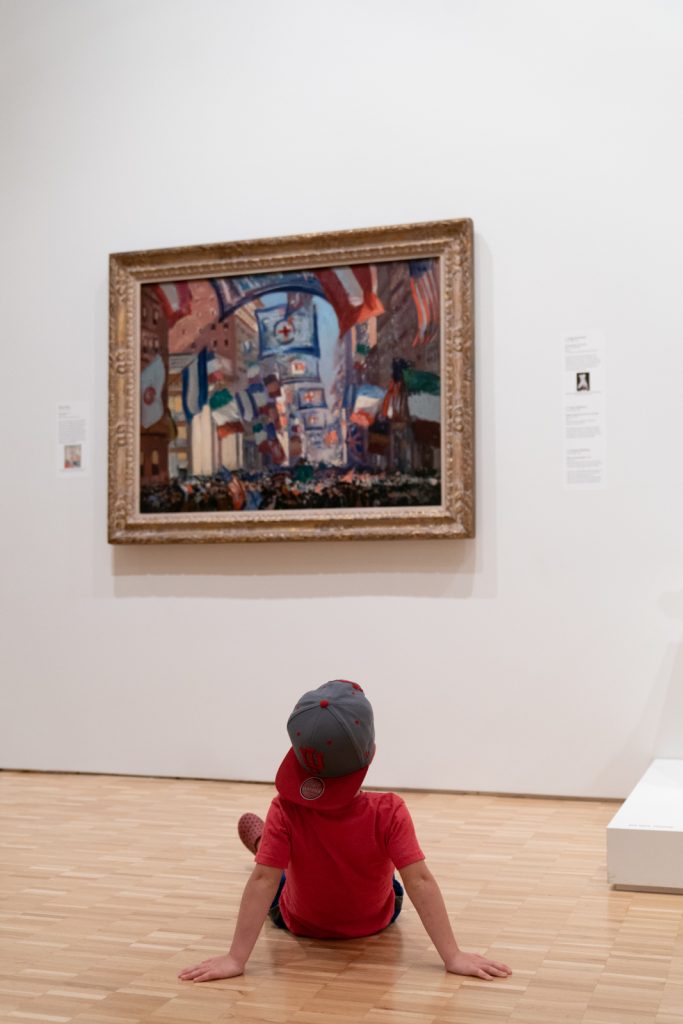
At Slow Art Day HQ we love the creativity the Eskenazi brings to designing its Slow Art Day activities. We know we would enjoy working on the “slow-puzzle.”
We can’t wait to see what the Eskenazi Museum of Art comes up with for next year’s Blooming citywide event (which may turn into a statewide event – stay tuned).
-Johanna, Ashley, Jessica Jane, and Phyl
P.S. You can follow @eskenazimuseum on Facebook and Instagram.
P.P.S. The museum asked us to include this statement: The museum wishes to acknowledge and honor the myaamiaki, Lënape, Bodwéwadmik, and saawanwa people, whose ancestral homelands and resources Indiana University Bloomington occupies.
